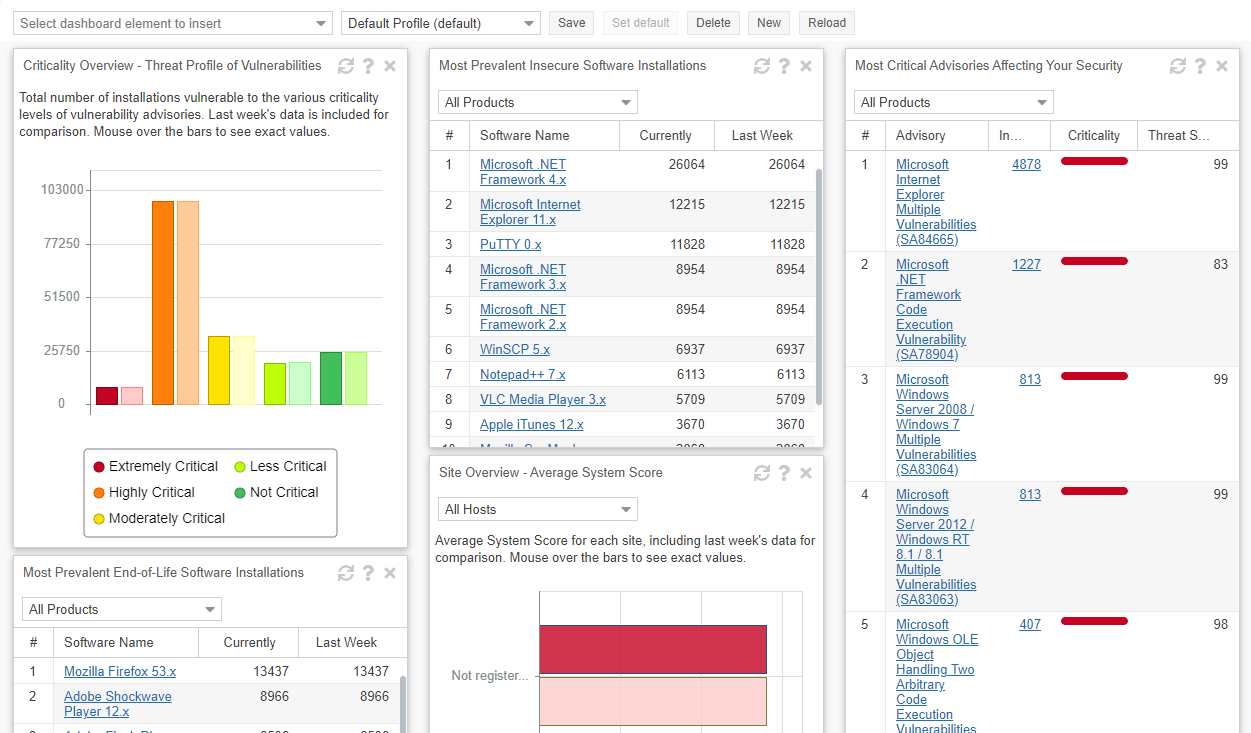Software vulnerability
What is software vulnerability?
What is software vulnerability?
Software vulnerability is a structural or design flaw present in a software application that can be exploited by attackers to compromise the security and functionality of the system, network or data with which it interacts. Vulnerabilities can arise due to coding errors, design oversights, outdated software or unintended interactions between components, and they can have a wide-ranging implication for the security and stability of the digital ecosystem.
How can you decrease the likelihood and impact of software vulnerabilities?
How can you decrease the likelihood and impact of software vulnerabilities?
Through proper research, management and proactive measures, you can decrease the chances of a costly cyber-attack by:
-
Vulnerability testing and patch management
Integrating vulnerability testing and patch management is essential when considering software defense. Regular vulnerability assessments and penetration testing are vital. Utilizing automated tools to thoroughly scan software for established vulnerabilities and potential security weak points can significantly strengthen your IT environment. It's critical to stay proactive in tracking security updates related to the software components on which your organization relies, such as libraries and frameworks. By promptly implementing patches and updates, you can effectively address identified vulnerabilities and simultaneously curtail the prevalence of outdated software within a system.
-
Risk assessments and security trainings
Cultivating a security-conscious mindset across your entire organization will require aligning risk assessments and trainings to ensure a proper knowledge transfer and maintain technical integrity. This involves comprehensive security training that challenges teams with prevalent risks and implements reliable best practices. With this awareness, you can improve your digital infrastructure’s defense against potential threats.
Moreover, implementing a risk assessment approach will enable you to regularly evaluate vulnerabilities while gauging potential business impact. This will allow for strategic allocation of resources towards effective mitigation. These strategies will significantly enhance your software security posture.
-
Continuous monitoring and regular backups
To effectively address software vulnerabilities, it's essential to make sure there’s a plan in place that involves monitoring and backup. This will allow your network to continue running even when faced with critical security issues. Implementing continuous monitoring across all software and systems can help proactively detect any malicious or suspicious activities. This heightened vigilance enables you to identify and address potential breaches or vulnerabilities before they escalate into substantial threats. The practice of regular backups also stands as a crucial safeguard. By consistently backing up critical data and systems, you can establish a safety net that ensures a swift recovery in the event of vulnerability exploitation. This holistic approach will promote a strong defense against vulnerabilities, and also help you rebound seamlessly from any potential setbacks.
Challenges to consider when protecting your organization from software vulnerabilities
Challenges to consider when protecting your organization from software vulnerabilities
Implementing a comprehensive strategy to mitigate software vulnerabilities and safeguard your organization can present a number of obstacles.
- Resource constraints: Adequate implementation of security measures requires financial and human resources. Budget limitations might hinder your ability to invest in the necessary tools, training and personnel to effectively manage vulnerabilities
- Complexity of systems: Modern organizations often have complex software ecosystems with numerous interconnected components. Identifying vulnerabilities across all these systems and ensuring their security can be intricate and time-consuming
- Third-party dependencies: Reliance on third-party vendors for software components or services can introduce vulnerabilities that are beyond your direct control. Ensuring their security practices align with your standards can be challenging
- Legacy systems: Older software or systems might not be easily updated and patched, leaving them vulnerable to exploits. Balancing the need to secure legacy systems with the cost of modernization can be a challenge
- Time sensitivity: Security vulnerabilities can have a limited window of time between discovery and exploitation. Implementing patches or fixes promptly is crucial, and delays can expose your organization to potential risks
The rapidly evolving threat landscape demands constant vigilance and adaption. Skill shortage in the specialized field of cybersecurity, coupled with regulatory compliance requirements, also pose difficulties. Achieving a culture shift towards security consciousness and clear communication throughout the organization requires dedicated efforts. Addressing these multifaceted challenges demands leadership support, ongoing education and commitment to building a resilient security posture over the long term.
How will a strong software vulnerability plan improve your business?
How will a strong software vulnerability plan improve your business?
Ensuring a robust plan for managing software vulnerabilities can significantly enhance your business in multiple ways. Such a plan bolsters your overall cybersecurity posture, reducing the risk of data breaches, unauthorized access and service disruptions. By preventing potential damage, your company safeguards its reputation, customer trust and regulatory compliance.
A strong vulnerability management strategy also enhances operational efficiency. Proactively identifying and addressing vulnerabilities reduces downtime caused by security incidents, leading to improved productivity and uninterrupted business operations. Moreover, it minimizes the cost of responding to breaches, which can involve legal fees, customer notifications and potential fines.

While it can be challenging to precisely quantify the ROI due to the varying nature of vulnerabilities and their potential impacts, the avoidance of reputational damage, legal liabilities and operational downtime can collectively contribute to substantial cost savings. Additionally, a stronger security posture can attract new customers, retain existing ones and foster a competitive advantage in industries where data security is paramount.
Additional resources:
- To discover more about how to protect your enterprise from software vulnerabilities, join our upcoming roundtable discussion.
